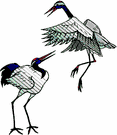"Baby owls ready to fledge"--have fledged
As noted in comments under original post "Baby owls ready to fledge?", Brandon notes that he was there and they had fledged. I am glad to hear he saw one in a tree. I stopped by this afternoon after a meeting and found them gone but could not locate any fledglings or parents. This is most unusual.
Generally fledglings move to tree branches nearby where they practice short flights. Per Birds of North America online, "capable of 3–4 short flights of diminishing distance; tire easily." And this is my experience. Fledglings need time to strengthen their muscles so they can fly further distances.
So I am happy that at one fledgling that Brandon saw is ok. I hope the other 2 are also ok. Baby owls are very vulnerable. When they were in the nest, they were proverbial sitting-ducks for anyone who wanted to throw things at them or shoot them. Once they fledged they are vulnerable to attack by off-leash dogs, coyotes or other raptors (including unrelated Great Horned Owls). They may also be hit by cars. And they could be easily worn out by people chasing after them to view them up close or take close photos. SeEtta
Labels: Great Horned owl fledglings




































